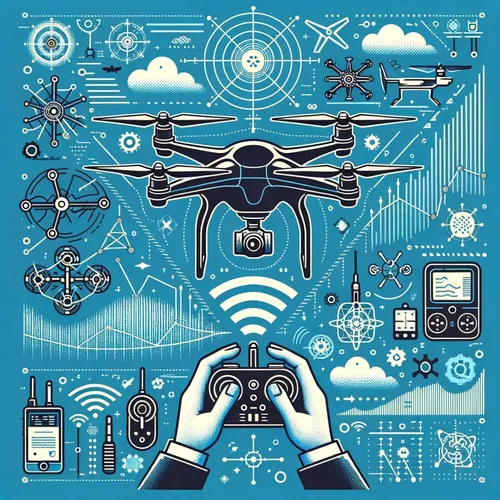Drones Dominate: Soaring Profits and Scandals in the Sky
- Author
- Quiet. Please
- Published
- Sat 23 Aug 2025
- Episode Link
- https://www.spreaker.com/episode/drones-dominate-soaring-profits-and-scandals-in-the-sky--67486998
This is you Commercial Drone Tech: Enterprise UAV Solutions podcast.
Commercial drone technology is redefining how enterprises solve complex challenges, with industries such as construction, agriculture, energy, and infrastructure inspection leading the way in adoption. In construction, drones create real-time site maps, monitor progress, and enhance safety by surveying hazardous areas. Agriculture benefits from aerial crop assessments and precision spraying, dramatically increasing yields while reducing resource use. Energy providers deploy drones for powerline and wind turbine inspections, shortening downtime and mitigating risk without putting workers in harm’s way. Infrastructure and utilities leverage UAVs for bridge, roadway, and pipeline inspections, saving significant time compared to legacy techniques.
Return on investment for enterprise drone programs is driven by factors like reduced labor costs, increased safety, and data-driven decision making. According to the Drone Industry Insights market report, global commercial drone market value surpassed 38 billion US dollars in 2025 and is projected to continue double-digit growth. A major United States construction firm recently cut project survey times by 75 percent after integrating drone mapping, while a large agricultural producer reports annual savings of 30 percent through drone-assisted crop health monitoring.
Managing fleets of drones across multiple sites, however, requires powerful software solutions. Platforms such as FlytBase, Airdata UAV, and Azuga offer automated flight logging, predictive maintenance scheduling, and comprehensive analytics, helping companies scale their drone operations efficiently. Cloud-based enterprise management software, such as DJI FlightHub 2 and Aloft Air Control, supports regulatory compliance and centralized oversight, including features for Remote ID and automated LAANC airspace authorization. Security is critical, with platforms now offering enhanced enterprise data encryption and SOC2-level safeguards to reduce cyber risks.
Integration with existing business systems remains a focus. Drone analytics platforms now connect directly to enterprise resource planning and asset management tools, ensuring operational data flows seamlessly into daily decision making. Many vendors are rolling out open APIs, allowing system integrators to tie drone-derived insights into workflows across departments.
Staffing and training are undergoing evolution as well. Enterprises are partnering with specialized drone training providers to certify employees, reduce operational risks, and meet regulatory mandates such as the Federal Aviation Administration Part 107. Comprehensive training and standard operating procedures are helping organizations achieve safe and efficient drone program growth.
Recent news highlights include new Federal Aviation Administration rules for beyond visual line of sight operations in energy inspection, a record-scale drone deployment by a European utility for network resilience, and a major investment in agricultural drone fleets by a global food producer. These stories reflect how drone adoption is accelerating and diversifying in 2025.
Looking ahead, artificial intelligence-powered analytics, increased autonomy, and seamless integration with business platforms are set to drive the next evolution in enterprise drone tech. For those planning to implement or expand their drone initiatives, key action items include selecting a robust management platform, prioritizing workforce training, and designing clear protocols for compliance and data security.
Thanks for tuning in. Come back next week for more. This has been a Quiet Please production. For me, check out Quiet Please Dot A I.
For more http://www.quietplease.ai
Get the best deals
